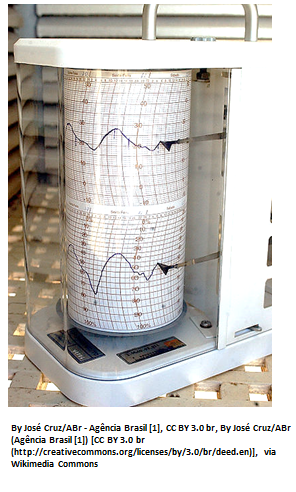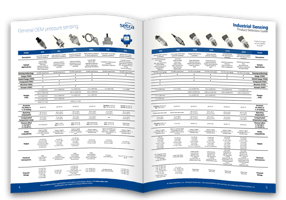IP Ratings are used to define levels of sealing effectiveness and degrees of protection against substances in electrical enclosures. Ratings are defined by the international standard EN 60529 (British BS EN 60529:1992, European IEC 60509:1989).
Setra Blog
Buildings Can Get Sick Too…
When you are not feeling well, you usually attribute the root cause to bacteria or an infectious person. Not many people realize the root cause of an illness can be improperly regulated HVAC systems in buildings. Indoor air quality is becoming a matter of concern. In fact, Americans on average spend 90% of their time indoors; less than an hour a day is spent outside. All of this time spent indoors in a poorly controlled environment can lead to sick building syndrome (SBS).
Although mold has many medical uses, it can be a huge problem for homes and buildings, especially if mold growth goes undetected. Mold spores spread easily and can grow anywhere, including carpet, clothing, food, paper as well as drywall, areas inside walls, around leaking or condensing pipes, and above ceiling tiles. Since mold cannot be completely eradicated and can be costly to fix, the best approach is to prevent mold before it becomes a problem. So how do you prevent mold growth?
Protective Environment (PE) rooms are hospital rooms designed to protect a high-risk immunocompromised patient from human and environmental airborne pathogens. These are positive pressure rooms intended to keep patients safe during recovery from cancer treatment or stem-cell transplant.
Airborne Infection Isolation (AII) rooms, commonly called negative pressure rooms, are single-occupancy patient care spaces designed to isolate airborne pathogens to a safe containment area. AII rooms are a specialized application of a hospital’s HVAC system, where the airflow supplied into the room is balanced with exhaust airflow to create at least -0.01” WC negative differential pressure with respect to an adjacent space, usually the hallway or an anteroom. In simple terms, this provides a gentle flow of air under a closed doorway and into the room so that no airborne particulates escape into nursing staff or public areas. Exhaust from these rooms is not recirculated in the HVAC system. Instead, exhaust air typically moves in dedicated ductwork to ventilation stacks on the rooftop, where atmospheric air provides sufficient dilution to make the resulting air safe.
April 28, 2016
Why should you use a unidirectional differential pressure transducer for isolation rooms?
We have gone over the best practices for selecting a unidirectional and a bidirectional differential pressure transducer based on usage and application. So why should you use a unidirectional differential pressure transducer over a bidirectional model for an isolation room? When requiring an increased accuracy reading for positive and negative pressure, it is best to use a unidirectional transducer. For positive pressurized rooms, you can place the low port on the reference area and the high port on the room of concern. For negative pressurized rooms, you place the low port on the negative pressure room of concern and the high port on the pressure reference area.
Companies often resist change, especially when lacking direction, a defined end goal, guidance and leadership. It should be a top priority for executives to cut costs and streamline operations. However, there may be several emerging barriers for companies to overcome in order to begin investing in energy management.
The accurate measurement of humidity is important in many HVAC/R applications. Relative Humidity (RH) is a measure of the ‘actual humidity’, relative to the maximum possible humidity at a given temperature. RH sensors contain an assembly that is made up of an integrated sensor and transmitter. The sensor measures the RH while the transmitter creates an output signal proportional to the sensed RH. There are two common types of humidity sensing elements that are most widely used; Capacitive and Resistive.
There is no guarantee of a perfect, contaminant free cleanroom. However by adhering to room pressure requirements, proper gowning procedures and by understanding the origins of the contaminants, users can minimize contamination risk to ensure safe testing and manufacturing environment. These are some of the things you may not have realized can compromise a cleanroom, and some possible ways to reduce the contamination of the source.
A Cyclic Redundancy Check (CRC) error is an error-detecting code used to identify accidental changes to raw data in digital networks and storage devices.
Cyclic Redundancy Check (CRC) Error indicates when data is corrupted. Calculating from all data, CRC validates packets of information sent by devices and verifies it against the data extracted, ensuring its accuracy. When sending packets over, BACnet automatically calculates and stores a CRC value for the packet. Later when the packet is received, BACnet calculates the CRC value of the packet and compares it to the original value. If the two values do not exactly match a CRC error occurs.
Subscribe to Our Blog!
Topics
- Critical Environments (182)
- HVAC/R (179)
- General Industrial (153)
- Building Automation (134)
- General Industrial OEM (92)
- Energy Management (85)
- Test and Measurement (66)
- HVAC/R OEM (58)
- Barometric (44)
- Alternative Fuels (42)
- Medical (40)
- Process/Mfg Tank Level (40)
- Water and Wastewater (39)
- OHV (38)
- Oil and Gas (35)
- Industrial Vacuum (29)
- Calibration (25)
- Semiconductor (25)
- Particle Counting (20)
- Cleanroom Monitoring (17)
- Room Pressure Monitoring (16)
- Trade Show (12)
- cleanroom environment (12)
- Scales (11)
- Environmental Monitoring (10)
- Power Monitoring (10)
- Healthcare (9)
- Power Meters (9)
- Software (9)
- cleanroom monitoring systems (9)
- Case Study (8)
- critical environment technologies (8)
- data centers (8)
- Humidity (7)
- particle counter (6)
- pressure transducers (6)
- LITE room pressure monitor (5)
- hardware and software cleanroom monitoring systems (5)
- setra lite (5)
- Compliance (3)
- Video (3)
- hospital spaces (3)
- FAQ & Troubleshooting (2)
- Monitoring Compounding Pharmacies (2)
- Semiconductor Manufacturing (2)
- agencies that monitor pharmacies (2)
- energy (2)
- hvac (2)
- laboratories (2)
- monitor compound pharmacy (2)
- protected environment (2)
- regulatory compliance (2)
- setra lite features (2)
- usp 797 (2)
- Current Sensors and Transducers (1)
- Current Transformers (1)
- Lithium-Ion Battery (1)
- Pressure (1)
- aerospace cleanrooms (1)
- cems (1)
- digital transformation (1)
- ipv6 multicast (1)
- ipv6 multicast address (1)
- ipv6 multicast address range (1)
- isolation room pressure monitoring (1)
- multicast address ipv6 (1)
- multicast ipv6 (1)
- operating room (1)
- pharma 4.0 (1)
- pressure sensor (1)
- pressure transducer companies (1)
- semi conductor (1)
- sensors and transducers (1)
- setra pressure transducers (1)
- submetering (1)
- sustainability (1)
- temperature monitor (1)
- temperature monitoring for pharmacies (1)
- transducers (1)
- usp 800 (1)
- water (1)
- what does hvac stand for (1)
- what is a transducer (1)
- what is hvac (1)














